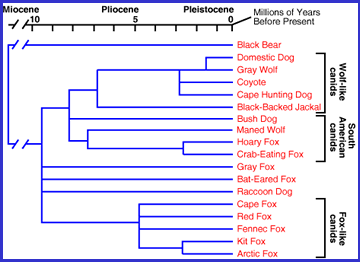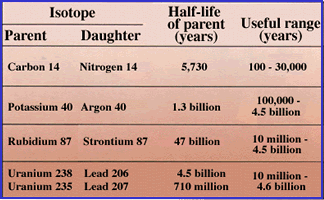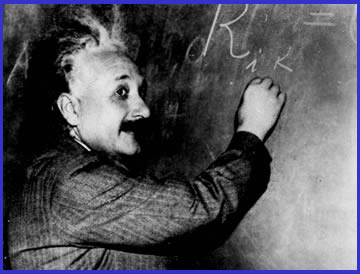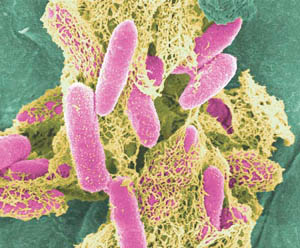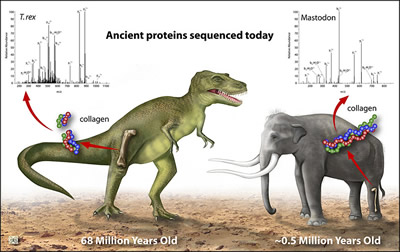Click on image for full size
National Biological Information Infrastructure
Evolution
Evolution is the process of change through time. Many things evolve. Language evolves so that English spoken four hundred years ago during the time of playwright Shakespeare was very different than English spoken today. Technology evolves over time as new things are invented and modified. Scientific theories evolve as more data are collected and analyses are done. Life evolves over very long timescales as species change over many, many generations. This is called biological evolution. Evolution is the foundation for the modern sciences of paleontology (the study of fossils and the history of life), ecology (the study of ecosystems), and biology (the study of life) including medical science.
The links below hightlight resources on Windows to the Universe that are about biological evolution and related topics.
The Evidence of Evolution Exploratour examines the scientific evidence of biological evolution. Take the tour to travel through 10 web pages about the scientific theory that explains how and why living things change over many generations. Take the whole tour or explore individual topics listed below. Topics include:
- What is Evolution
- Microevolution
- Fossil Evidence of Macroevolution
- Leonardo DaVinci's Findings and the Ages of Fossils
- The Theory of Natural Selection
- What Is a Theory Anyway?
- Dog Breeds: An Example of Artificial Selection
- Peppered Moths: An Example of Natural Selection
- Bacteria and Antibiotics: An Example of Evolution by Natural Selection
- Molecular Evolution
- Evolution Resources to Explore More!
Evolution in the News
- Analysis of Protein from T. rex Bone Confirms Dinosaurs' Link to Birds
- Fossil Record Suggests Insect Assaults on Foliage May Increase with Warming Globe
- Missing Link Between Whales and Four-Footed Ancestors Discovered
- Did Life First Form in a Mica Sandwich at the Bottom of an Ancient Sea?
- Using Leaves From the Past to Tell the Future!
- Digging Woolly Rhinos
- Did T-Rex Have a Plant-Eating Relative?
- Diamonds are Ancient History
- Old Rocks Give New Clues about Ancient Earth
Podcasts about Evolution
- Evolution Revolution - A new study suggests human evolution has been supercharged the past 40,000 years. (1 min. 30 sec.) from NSF
- Distant Whaletive - A research team has discovered the missing link between whales and their four-footed ancestors. (1 min. 30 sec.) from NSF
- Got Mica? - Earth's first life may have formed inside a primordial soup that was sandwiched between the many layers of the mineral mica. (1 min. 30 sec.) from NSF
Video
- Evolution Hits the Beach streaming RealVideo (1 min. 7 sec.) from NSF
Scientists who Researched Evolution
- Charles Darwin was the first scientist to publish a comprehensive theory of evolution in the19th century.
- Stephen Jay Gould expanded Darwin's theory with his own concept of punctuated equilibrium in the 20th century.
- Leonardo da Vinci did a little bit of everything! When he was not painting the Mona Lisa, he was a scientist and discovered how sedimentary rocks and fossils are formed.
Related Resources
- Life
- Earth History
- Geologic Time
- Fossils
- Sedimentary Rocks
- Sedimentary Facies
- Changing Planet: Changing Mosquito Genes Classroom Activity and Video


